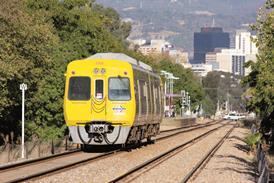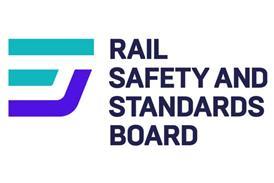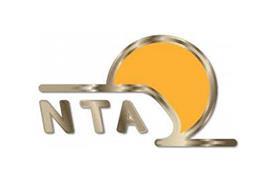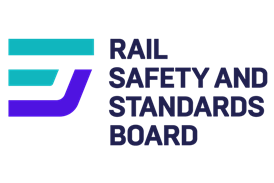L.B. Foster’s KELTRACK® On-Board technology promises a fresh approach to managing the wheel-rail interface, giving railways the chance to deliver safer, more effective and more precise friction management.
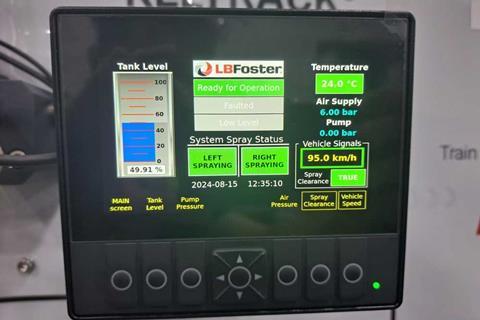
Understanding, managing and optimising the relationship between steel wheel and steel rail is among the most fundamental tenets of railway operation. Sound maintenance of both wheel and rail is needed to keep both in good condition.
The rails themselves are prone to degradation and damage as trains pass over them. These problems are often most prevalent at specific locations, such as low radius curves for example, where the squeal of wheel on rail is a well-known phenomenon. Railways have long sought to mitigate the risk of damage to wheel and rail by applying grease, oil or other friction management products to the rail at specific locations. Managing the application of lubricants and friction modifiers to the wheel-rail interface is the domain of specialist suppliers such as Pittsburgh, US-based L.B. Foster Company.
With a long and storied heritage in the rail infrastructure field in North America, L. B. Foster’s KELTRACK® friction modifier has emerged over recent years as an industry standard for trackside applications. A key benefit of KELTRACK is its water-based composition; the solution applied to the rail contains no oils whatsoever, which the company says makes it unique in the market.
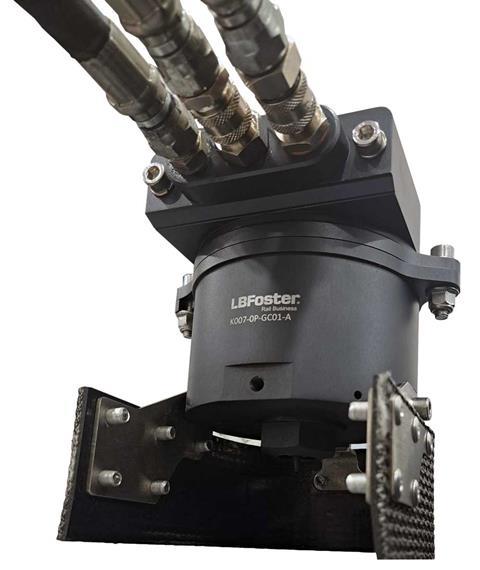
Under this conventional approach to friction management, trackside applicator bars typically dispense the modifying agent onto the tracks, when triggered to do so by a passing train. While this has become established practice across the main line and urban rail markets, it does still have clear drawbacks. These include a relative lack of precision over how the friction modifier is applied; the need to maintain the applicator bars themselves, requiring “boots on the ballast“; and a restriction on the amount of the network where friction management can be applied because of the static and discrete nature of the wayside devices.
Enter KELTRACK On-Board (KOB)
The natural alternative to wayside application of a friction modifier is to move the task onto the train itself. This has been adopted by various railways using solid tread sticks to apply friction modifier directly to the wheel tread. This approach, however, does have some technical and benefit limitations. As a result, L. B. Foster, considered the potential for adapting its successful KELTRACK friction modifier for use on the train itself; this variant is known as KELTRACK AP EX and is dispensed by its newly developed delivery system, KELTRACK On-Board (KOB).
“This technology first emerged about 20 years ago with the US Class 1s, who were looking at it as a fuel saving technology“, explains Mathew Holland, Global Product Manager – Onboard Spray at L.B. Foster. “In around 2016 or 2017, we started to see more interest from passenger transit providers.“ The first to trial KELTRACK On-Board was Swiss operator BLS, which had been searching intensively for ways to mitigate some recurring cases of rolling contact fatigue damage on a portion of its rolling stock fleet.
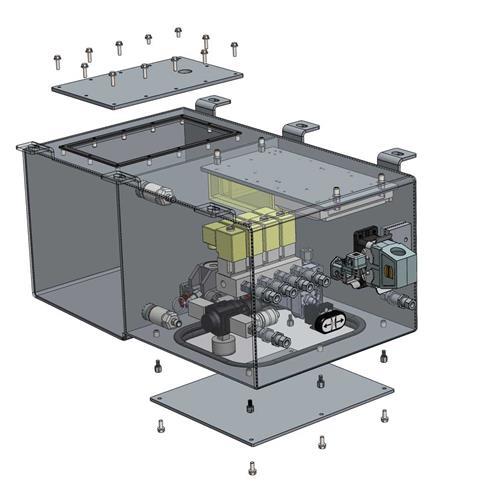
KELTRACK On-Board dispenses KELTRACK AP EX directly to the railhead via its proprietary air atomising dispensing nozzles, typically installed to bogie frame and located toward the leading axle of the vehicle. KELTRACK can be deployed autonomously via geolocation, or at pre-defined time intervals. Output volumes are on a per kilometre basis and adjustable in the order of millilitres per kilometre. The system can interface directly with the Train Control & Management System (TCMS). This allows parameters such as velocity, braking, and sanding to be monitored in real-time to influence the behaviour of the system. Early maintenance alarms facilitate preventative maintenance which maximises system uptime.
Holland explains that there are three key elements to the KELTRACK On-Board assembly. The first contains the Programmable Logic Controller, pump, motor, product reservoir and solenoids, housed in the dispensing cabinet. The second element is the dispensing nozzle, complete with wind skirt, which acts as a shroud to protect the integrity of the spray cone from turbulent effects. The third and final element is the link to the train’s TCMS, which also provides a means of electrical isolation and system interrogation.
On a bi-directional train such as a passenger multiple-unit, two KELTRACK On-Board systems are recommended, one for each direction of travel. “Ideally we want dispensing nozzles as close to the leading axle as possible“, Holland says; this maximises the benefit to the following wheels of the train. The KELTRACK solution is then dispensed at a predetermined rate over a given length of track — “for example, we may target deployment at all curves of less than 350 m radius“, he adds.
The deployment would happen without intervention from the driver of the train. A direct current feed from the auxiliaries of the train would power the equipment, while a Human Machine Interface can be installed on the train to support maintenance and optimisation of the system. This would typically be fitted by the bulkhead behind the driving cab.
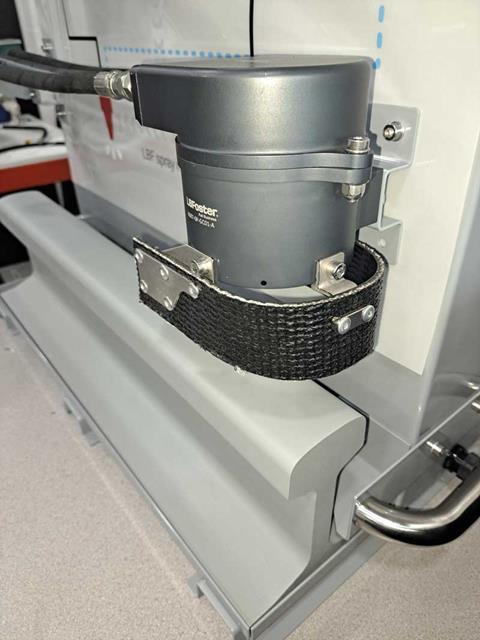
Making the case
Encapsulating the benefits of KELTRACK On-Board, Holland says that the friction modifier “goes wherever the train goes“, quite literally spreading the benefits across the network to much greater extent than can be achieved with wayside installations.
“It is an effective means of targeting a range of issues relating to the wheel-rail interface“, he says. These include noise, corrugation and wear. “KELTRACK is a positive friction material, this means with increasing creep (slip) values experienced during curving, the frictional gradient is positive. This inhibits stick/ slip oscillations which are a root cause of noise and corrugation issues on the railhead. Friction values are maintained at an intermediate level (0.3-0.4)”.
Yet with such a strong case for wider adoption, Holland is philosophical about the challenges of introducing this new product to the market. He says, “oil or grease-based on-board systems are the current, established, technology. We believe our solution is fundamentally superior, our challenge is to re-educate the market and redefine what can be achieved”. He is keen to emphasise that KELTRACK On-Board is fully certified and approved for use. The system also looks markedly different to other approaches in the market; Holland explains that even the application nozzle has a bespoke ‘duckbill’ design to minimise product build-up and significantly extend maintenance intervals.
A wider question concerns the business case, especially since KELTRACK On-Board is essentially transferring the friction modification task from the trackside to the vehicle. This could make allocating the gains from uptake of the system harder to do, since the costs would largely shift from the domain of the infrastructure manager to the operator or fleet owner. However, Holland is sanguine: “we can generate operator focussed value proposition models and we can demonstrate and evidence the benefits of the technology”, he says. In any case, Holland sees significant potential for use of KELTRACK On-Board in the metro segment and on other ‘closed loop’ systems, where the issue of vertical separation is much less likely to arise.
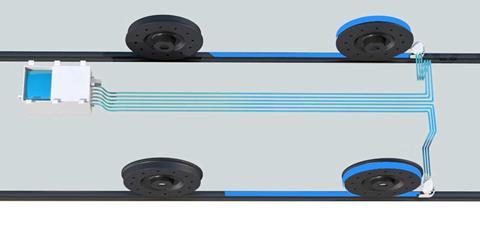
L.B. Foster is already assessing how far KELTRACK On-Board could be developed, with a range of design iterations and technical enhancements under consideration. But for now, Holland says the technology is “proven and ready to go“.
“Over the next 12 months, we want to find additional partners to continue to demonstrate and evidence the technology in real-world environments. That’s our major aim.”
Visit LB Foster at InnoTrans on Stand 285 in Hall 25.


